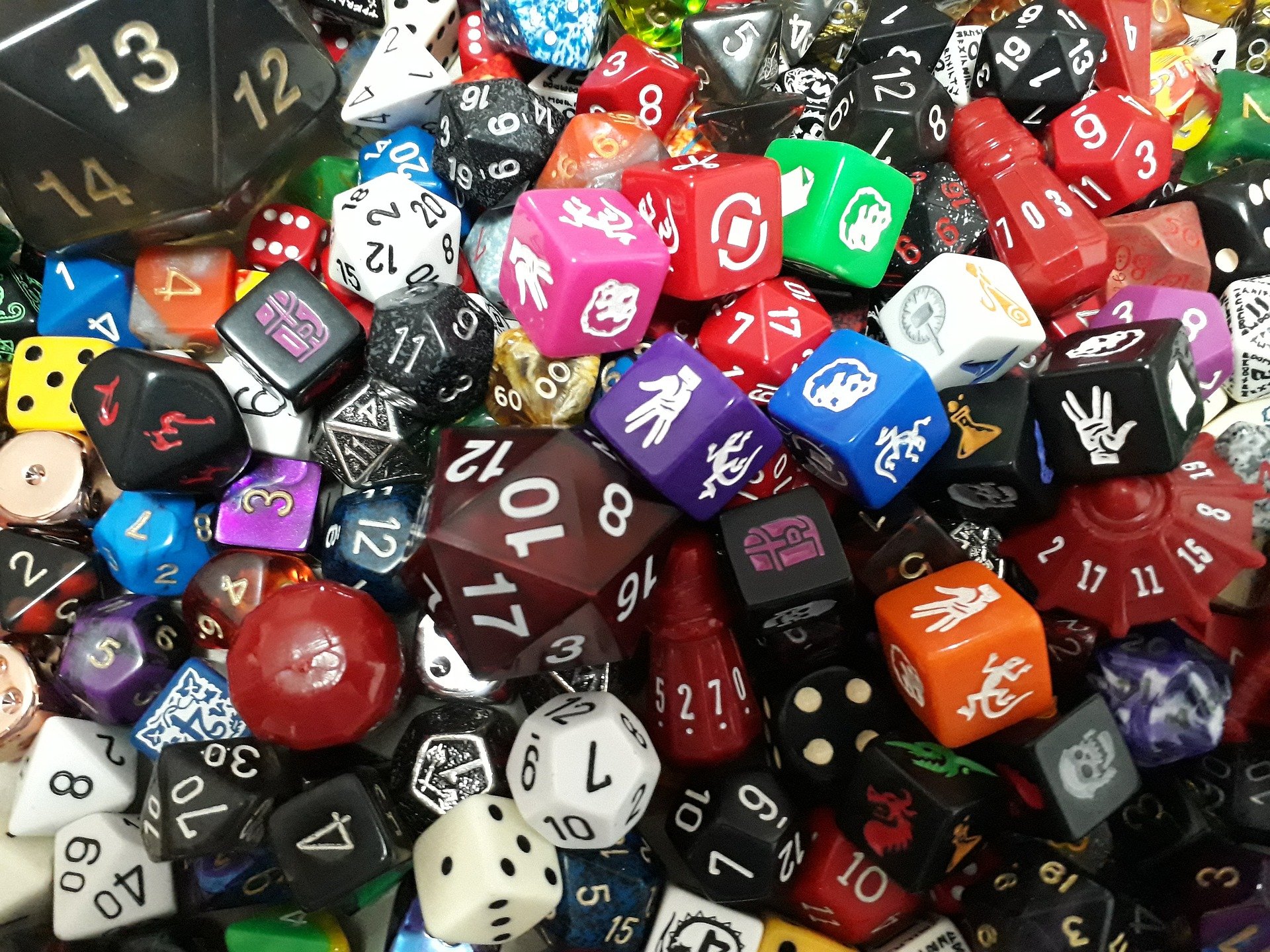As I’ve mentioned on the podcast, I have a supporting role in EN Publishing’s “Level Up” project, and they have, as of this writing, released three playtest documents. The Origins document, which details the new “race” mechanics (split into heritage and culture) and backgrounds, the first ten levels of the new Fighter class and the first ten levels of the new Rogue class. Out of both a sense of responsibility and general geeky enthusiasm, I decided to run my Sunday group through a playtest using The Challenge of the Fang from Tales of the Old Margreve. One of my explicit goals was to see how well the new Origins (heritage, culture, and background) rules played with third-party material, and as I was planning, the new Fighter class dropped, so we tried that, too.
Origins
The biggest change from “vanilla 5e” so far has got to be the Origins document. Splitting “race” into heritage and culture is something I’ve been an excited supporter of since I first saw it. Not only does it get rid of a lot of annoying racial essentialism nonsense still baked into D&D, it provides a huge amount of additional options for a player, since you can mix any heritage with any culture, and there are a lot of new options available.
And I do mean a lot. Each heritage (the biological side of what used to be “race”) has a small number of set traits. This includes things like size, movement speed, darkvision, and so on. From there, you select a Gift, which is another biological trait that alters the character in some way. For example, elves get to choose one of three options, each of which makes them more mystical in some way – they may gain heightened senses, magical awareness, or some minor glimpses of the future depending on what the player selects. There’s also another ability tied to heritage that unlocks at level 10. In some cases (such as orcs) this ability is set, but other heritages get their choice of options.
From there, you pick a culture, which can either match your heritage or be a completely different one. For example, in the playtest, one of my PCs was a dragonborn raised among gnomes. Each heritage has at least 4 cultures tied to it, and then there are a half-dozen additional options not tied to a specific heritage at all. These provide skills and various special abilities tied to the environment a character was raised in.
Astute readers may notice that I haven’t mentioned ability score bonuses yet. That’s
because those are tied to background now. The overall size of the total bonuses has been dropped
from +3 in most cases and up to +6 in the case of non-variant humans down to +2, but the loss is
compensated for by the presence of a lot of other abilities. For those wondering what the
difference between culture and background is, I’d say this is a good way to look at it:
culture is the society you were raised in. Background is what you did (or perhaps still do) in
that society.
There’s also been some efforts to rebalance the different options. One
issue that’s been taken with the baseline 5e rules is that Dragonborn are pretty
mechanically weak compared to the other choices available such as elves, dwarves, and so on. (And
that’s borne out by the well-known and well-respected Detect
Balance chart.) The design team has taken pains to make it so a dragonborn, an elf, and a
human are all of roughly-equivalent power level, regardless of culture and background.
So how’d they do? At least in my Sunday group, it’s largely been successful so far. My players really enjoyed the additional flexibility of the options. The new Orc and Dragonborn options were special hits, allowing combinations that previously wouldn’t have been viable to work beautifully. Dragonborn in particular got a lot of love with two different dragonborn PCs, including a dragon turtle variety. The amount of up-front work in character creation has increased (which is unavoidable in a game that is deliberately aiming for more options and crunch) but the new options feel more balanced and there’s a lot of interesting flavor in there. I haven’t had a chance to make a character with the new rules yet, but I’ve got several concepts in mind already, several of which would not have worked under the original 5e rules.
Fighter and Rogue
A quick note about the new fighter and rogue classes: Both of them are designed to be backwards-compatible, which means that you should be able to use an existing 5e subclass with either of them. Where you see reference to archetypes, that’s what they’re referring to.
The new fighter class is also out and jettisons what are probably the two most iconic fighter abilities in 5e; Second Wind and Action surge. This is a controversial design choice to be certain, but it’s compensated for by the new Maneuvers system. Those maneuvers were a big hit with the player who made a fighter to try the new rules out, but he’s also playing a savant in my main game, and the maneuvers work very similarly to a savant’s tricks.
To summarize, characters that get maneuvers power them off of something called the exertion pool. This pool is equal to your proficiency bonus and is refilled on a short or long rest. Fighters get a few extra points in the pool as a class ability, and to activate a maneuver, you simple spend the points it costs. It gives martial characters a lot more flexibility and more things to do than just roll to see if they hit, which has been a common complaint for most of 5e. The maneuvers are furthermore broken up into 10 different combat traditions, each with its own feel. Fighters get access to all of them, but other classes will get a much more limited set. (And if you really miss Second Wind, it’s not as gone as it seems – look at the Mountain’s Might maneuver under Adamant Mountain.)
Truth be told, I still miss Action Surge a little – I’ve never played a fighter in 5e, but the idea that you can take two rounds’ worth of actions in a single round is pretty great. However, it also created all kinds of goofy multiclass cheese. It became popular for spellcasters to grab two levels of fighter just to get Action Surge, which allows for some absolutely crazy “nova” potential. Lobbing two fireballs and a cantrip all in one round is very doable for a spellcaster with Action Surge, and it can make balancing encounters for parties with dedicated theory crafters in them a headache for GMs.
The class also includes something called Exploration Knacks. One of the other stated goals of the project is more mechanical love for the exploration and social aspects of the game rather than just combat. There’s also an emphasis on eliminating “dead levels” where the PC doesn’t get anything interesting when they level up. The exploration knacks are unique to the class they go with and the fighter ones represent the kind of additional training you might see in specialized military units. One gives the character a swim speed, another gives a climbing speed, and a third affects how far they can march without succumbing to exhaustion.
The rogue is also interesting – the new rules dispense with the old way of doing skill expertise and swap in a dice-based system instead. This allows for stacking expertise on top of itself for additional benefit, but makes skills with expertise less consistent. I can see what they were trying to do, but it’s not my favorite new change.
The rogue also gets exploration knacks and maneuvers, albeit at a faster and slower rate, respectively when compared to the fighter. The rogue is also limited to three of the combat traditions, as opposed to all ten of them like the fighter.
Both classes get a selection of ribbon abilities. The fighter ones in particular may be my personal favorite thing as far as flavor goes – you know how every fighter player tries to do the “fighter stare” and it seems like the dice never let it work? There’s a new ability called “Steely Mein” that greatly improves the odds that you can actually pull those tropes off. The rogue gets something similar called Innocent Facade that lets them conceal their motives, also with a number of options as to how it can work.
The player who tried the new fighter class was very positive in his feedback. He enjoyed the maneuvers and was able to pull off some cool moments with them. It was actually more fun as a GM to watch him in play, too – the presence of maneuvers made him a little less predictable than a standard 5e fighter. He was also pretty happy with the exploration knacks, but the adventure I used was a little light on places for him to use them. One of the other players has made a rogue, but hasn’t gotten a chance to actually try the character in play. I might be trying one myself in a future playtest – time will tell.
The Adventure
This was also my first time ever running a published adventure. As I mentioned earlier in this post, I picked Challenge of the Fang from the Tales of the Old Margreve book from Kobold Press. It’s not a bad adventure – in fact, it’s got some really fun, interesting elements to it, turning the tale of Little Red Riding Hood into a contest between nature, red in tooth and claw and civilization. It’s not, however, perhaps the best way to put a bunch of playtest characters through their paces and mechanically stress test the system. There are two fairly tough fights bookending the adventure and a lot of basically pure roleplaying in the middle. The adventure would probably be more suited to a group of PC with established relationships, that were also more closely tied to the forest in the game.
SPOILER WARNING: This is the basic plot of the adventure: the characters come into possession of the woodsman’s axe at the beginning, then meet the father of the current Red Riding Hood and get sent off to rescue her. In the middle, they encounter a magical maze full of fey and other forest denizens that test the PCs in various ways, then they fight The Big Bad Wolf at the end. The maze doesn’t have much in the way of combat in it, though, and some of the fey nonsense would probably be better utilized by a GM like Grant than one like me.
So while I think I would recommend the adventure (particularly as a con game with pregenerated characters or part of a larger game taking place in and around the Margreve forest, it’s not a fantastic stress test. Next time I run a playtest, I’ll probably go for a more straightforward dungeon crawl type of scenario that allows the PCs to try out their exploration knacks and other new abilities more. I’ll also probably wait until enough of the new class versions are out to form a full party.
That said, I’m glad I finally tried my hand at running a published adventure.
Conclusion
Overall, things look very promising for this new, updated version of 5e. I’m really happy with maneuvers and exploration knacks in particular, and the new Origins system is, in my opinion, an even better treatment than my previous favorite, Arcanist Press’s Ancestry and Culture. There’s still a lot of work to do – plans for A5e include updating all of the SRD classes, another class or two besides … and a bunch of other stuff I probably can’t even mention yet. In addition, the fighter and rogue are planned to be full 20-level classes, so it’s still very early days at this point, but I’m very happy with what I’ve been seeing so far.
Image by Ana Carolina Franco from Pixabay




